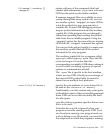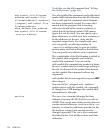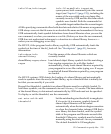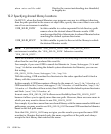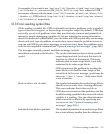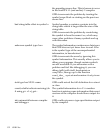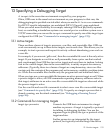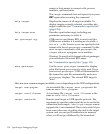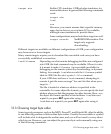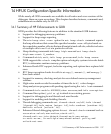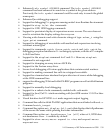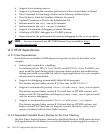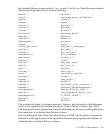names or host names to connect with, process
numbers, and baud rates.
The target command does not repeat if you press
RET again after executing the command.
help target
Displays the names of all targets available. To
display targets currently selected, use either info
target or info files (see “Commands to specify files”
(page 125)).
help target name
Describe a particular target, including any
parameters necessary to select it.
set gnutarget args
GDB uses its own library BFD to read your files.
GDB knows whether it is reading an executable, a
core, or a .o file; however, you can specify the file
format with the set gnutarget command. Unlike
most target commands, with gnutarget the
target refers to a program, not a machine.
Warning: To specify a file format with set gnutarget,
you must know the actual BFD name.
See “Commands to specify files” (page 125).
show gnutarget Use the show gnutarget command to display
what file format gnutarget is set to read. If you
have not set gnutarget, GDB will determine the
file format for each file automatically, and show
gnutarget displays `The current BDF target is
"auto"'.
Here are some common targets (available, or not, depending on the GDB configuration):
target exec program An executable file. target exec program is the
same as exec-file program.
target core filename A core dump file. target core filename is the
same as core-file filename.
target remote dev
Remote serial target in GDB-specific protocol. The
argument dev specifies what serial device to use for the
connection (for example, /dev/ttya). target remote
supports the load command. This is only useful if you
have some other way of getting the stub to the target
system, and you can put it somewhere in memory
where it will not get clobbered by the download.
134 Specifying a Debugging Target




